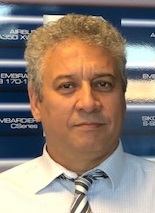In Aerometallic Tarazona during the months of October and December we have been fortunate to have Asepeyo professionals to collaborate in their R+D+I projects of good practices in virtual reality.
Asepeyo has developed a 3D simulation of the risks of working at heights, fire and a simulation of energy consignment, with blocking and unlocking of machines. With virtual goggles they entered a scenario created in 3 dimensions in which they climbed a building to perform work at height without being anchored to the lifeline. They experienced a fall from height and saw how the lifeline could save them and how to get out of a burning building.
Different work teams such as maintenance, production, and warehouse and office staff attended these practical sessions. These sessions are an experience of sensations and learning through virtual reality technology.
Modules on working at heights and fire evacuation have been developed to simulate situations in which the person experiences feelings of vertigo when working at the top of a building and feelings of anguish inside a factory where there is a fire and people’s lives are in danger. These simulations aim to transmit sensations that persist in a long term in the memory of the person because it is a personal experience intense enough to cause an awareness of the real dangers in our daily work and the importance of complying with procedures, in this case of evacuation or correct use of the safety harness, carabiners and other protective elements. In the case of virtual reality for fire evacuation, we have trained members of the intervention teams so that they understand their crucial role in an emergency situation.
In addition to these sessions we have been able to work with Asepeyo’s Pimex System, which can capture synchronized video images and particle exposure data.
With this system of synchronized capture of video images and data on exposures to chemical agents of the tasks performed by a person in the plant in real time, we have been able to observe in the identification area the pollutants that are released from dry sanding compared to wet sanding, since the latter minimizes the pollutant exposed as we could see with the measuring equipment. These tests were recorded and will be taught in the intervention centers.
The feedback from the participants has been very positive and they have appreciated the opportunity to learn using these exciting new technologies.





